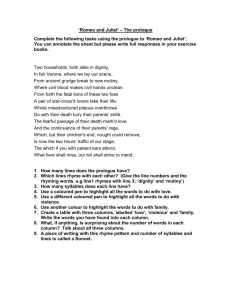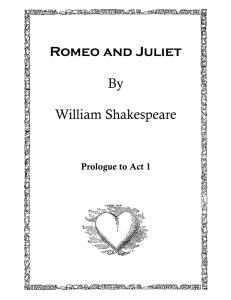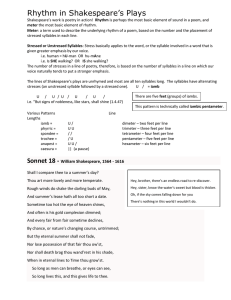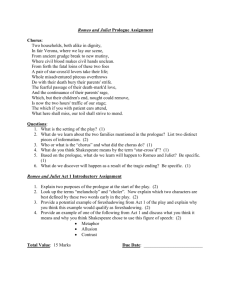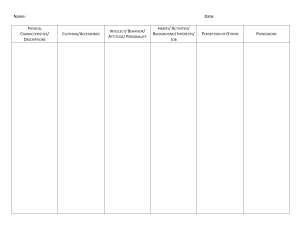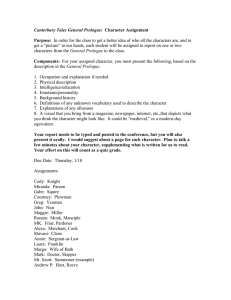Rhythm in Shakespeare’s Plays
advertisement
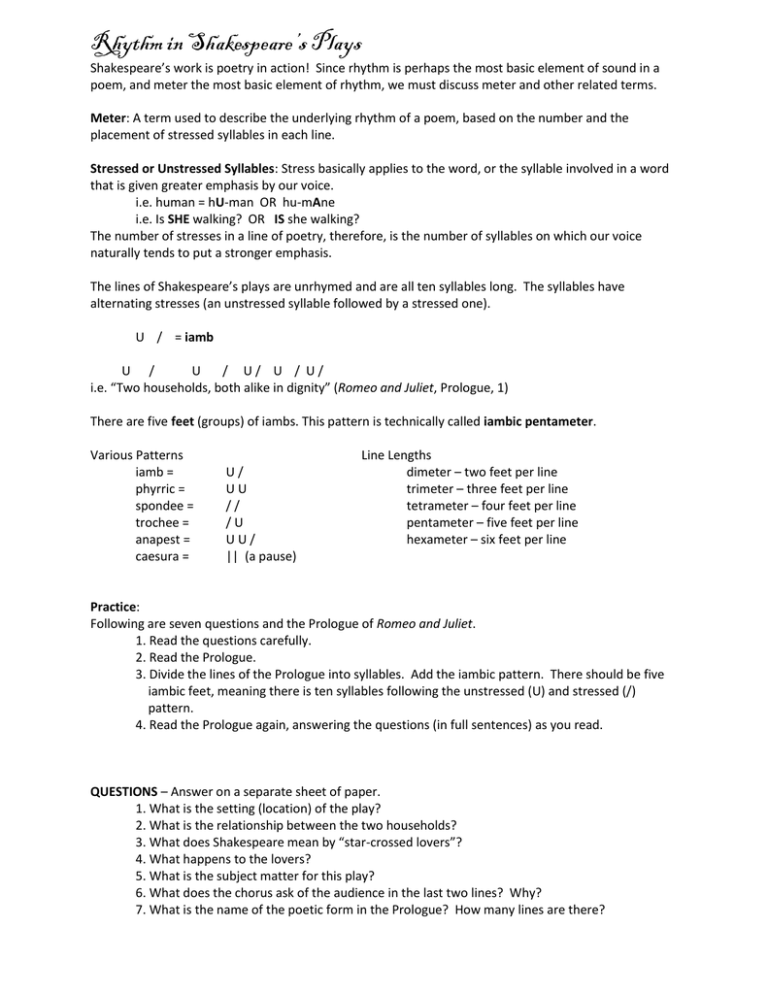
Rhythm in Shakespeare’s Plays Shakespeare’s work is poetry in action! Since rhythm is perhaps the most basic element of sound in a poem, and meter the most basic element of rhythm, we must discuss meter and other related terms. Meter: A term used to describe the underlying rhythm of a poem, based on the number and the placement of stressed syllables in each line. Stressed or Unstressed Syllables: Stress basically applies to the word, or the syllable involved in a word that is given greater emphasis by our voice. i.e. human = hU-man OR hu-mAne i.e. Is SHE walking? OR IS she walking? The number of stresses in a line of poetry, therefore, is the number of syllables on which our voice naturally tends to put a stronger emphasis. The lines of Shakespeare’s plays are unrhymed and are all ten syllables long. The syllables have alternating stresses (an unstressed syllable followed by a stressed one). U / = iamb U / U / U/ U / U/ i.e. “Two households, both alike in dignity” (Romeo and Juliet, Prologue, 1) There are five feet (groups) of iambs. This pattern is technically called iambic pentameter. Various Patterns iamb = phyrric = spondee = trochee = anapest = caesura = U/ UU // /U UU/ || (a pause) Line Lengths dimeter – two feet per line trimeter – three feet per line tetrameter – four feet per line pentameter – five feet per line hexameter – six feet per line Practice: Following are seven questions and the Prologue of Romeo and Juliet. 1. Read the questions carefully. 2. Read the Prologue. 3. Divide the lines of the Prologue into syllables. Add the iambic pattern. There should be five iambic feet, meaning there is ten syllables following the unstressed (U) and stressed (/) pattern. 4. Read the Prologue again, answering the questions (in full sentences) as you read. QUESTIONS – Answer on a separate sheet of paper. 1. What is the setting (location) of the play? 2. What is the relationship between the two households? 3. What does Shakespeare mean by “star-crossed lovers”? 4. What happens to the lovers? 5. What is the subject matter for this play? 6. What does the chorus ask of the audience in the last two lines? Why? 7. What is the name of the poetic form in the Prologue? How many lines are there? Two households, both alike in dignity In fair Verona, where we lay our scene, From ancient grudge break to new mutiny, Where civil blood makes civil hands unclean. From forth the fatal loins of these two foes A pair of star-crossed lovers take their life; Whose misadventured piteous overthrows Doth with their death bury their parent’ strife. The fearful passage of their death-marked love And the continuance of their parents’ rage Which, but their children’s end, naught could remove, Is now the two hours traffic of our stage; The which, if you with patient ears attend, What here shall miss, our toil shall strive to mend. (Romeo and Juliet, Prologue)
